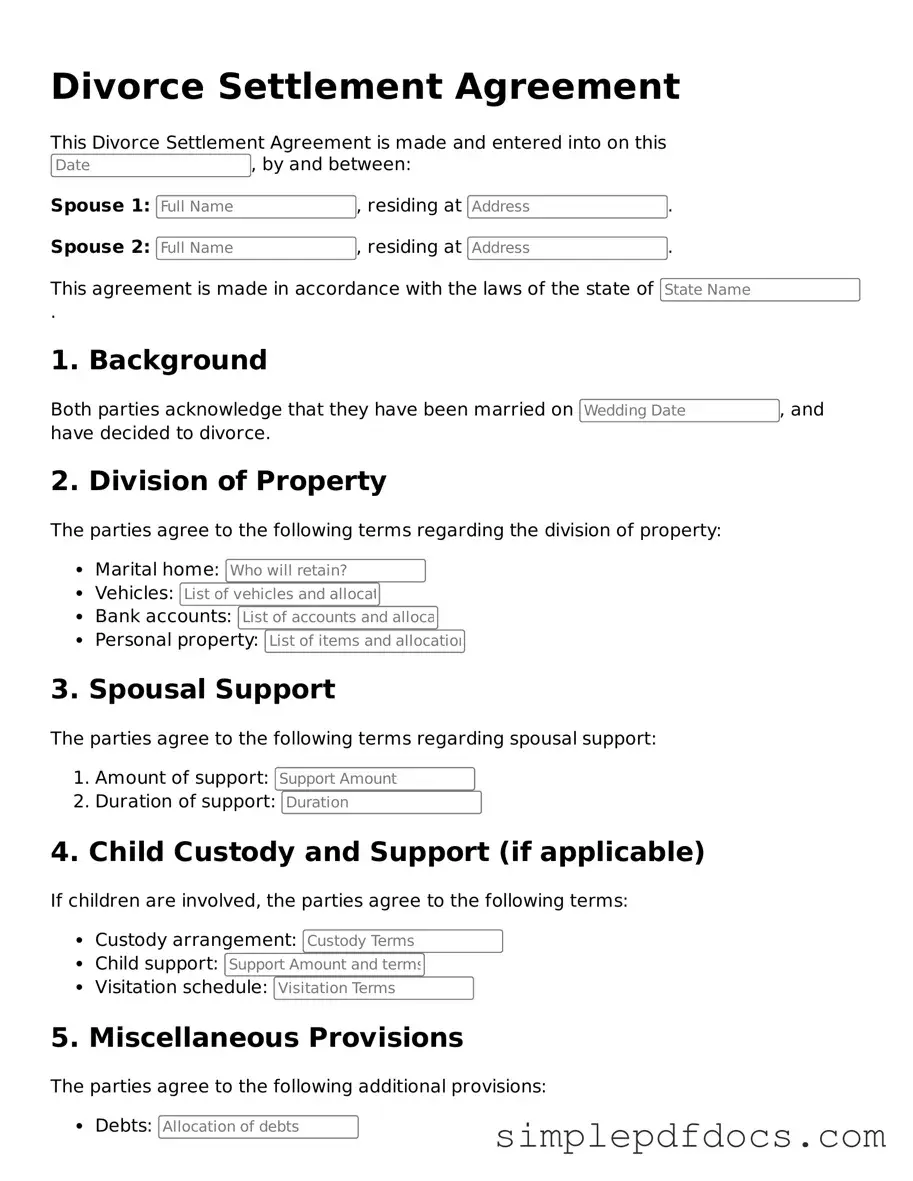Attorney-Approved Divorce Settlement Agreement Form
A Divorce Settlement Agreement form is a legal document that outlines the terms and conditions agreed upon by both parties during a divorce. This agreement typically covers various aspects, including asset division, child custody, and spousal support. By formalizing these arrangements, the form helps ensure a smoother transition for both individuals as they move forward with their lives.
Get Document Here
